There are many things that are great about Eddie Tuduri, including his career as a drummer which had him touring and/or recording with Rick Nelson, Jim Messina, Steve Perry, Dr. John, Ike Turner, The Beach Boys, Johnny Rivers, Delaney Bramlett, Bobby Whitlock, and many other artists.
But, most importantly, he is a great human being, who after breaking his neck in a body surfing accident has devoted his boundless energy to The Rhythmic Arts Project (TRAP), a program with a global reach that “educates individuals with intellectual and developmental differences as well as children in typical preschools by embracing a unique methodology that encompasses rhythm as a modality to address basic life and learning skills as well as reading, writing and arithmetic.”
This interview was for a preview article for a benefit concert for TRAP on 8/21/15 at 4 p.m. at the Hill-Carrillo Adobe, 15 E. Carrillo St. in Santa Barbara. On the program is an incredible lineup of musicians – including Tuduri, Airto Moreira, Tamara and Bill Champlin, Táta Vega, and the band Pockets. It was done by phone on 8/5/15.
Jeff Moehlis: Hi Eddie! I’m happy to finally do a proper interview with you!
Eddie Tuduri: Thanks! These past two years have been really transformative for TRAP.
I seldom talk about my career before The Rhythmic Arts Project. I’m often asked who I played with or what I did, and because of the relevance to the project I don’t talk about it much. But I did put a link to my resume on the website, if you want to look at who I’ve played with [laughs]. I’m old enough that I had better have played with somebody.
JM: I may ask you a little bit about that later, but I want to start with The Rhythmic Arts Project. Can you tell us what’s new with TRAP?
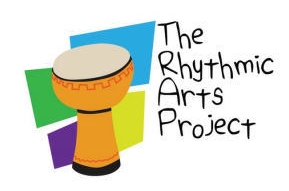
ET: The problem has always been trying to identify what The Rhythmic Arts Project is. When people ask me, “What is TRAP? What do you do?”, the short answer is I include people. It’s vague, but it’s the truth. We have an educational program that deals with reading, writing, and arithmetic, creative thinking, and many social skills that are necessary for folks who have intellectual differences or developmental differences. So it isn’t a drum program, or music therapy, and it certainly isn’t a drum circle.
In the past couple of years, we are more identified with the educational value of the program. There’s a new book that I wrote with five teachers in Ecuador. I’m going back to Quito in November to release it, we’re doing a release of the book there at the American International School. Also, that I’m working with such highly regarded teachers lends so much more credibility to the program. My past certainly isn’t in early childhood development, nor is it in intellectual disabilities, although I’ve gotten nearly 20 years in now. There isn’t really any accreditation on my part, so by surrounding myself with smarter people than I, the program is finally beginning to shine. People in the realm of education are really paying attention.
At the moment, UCLA is doing, you know, empirical evidence, scientific data with a group of people in Ventura County. This last year, Emily Mosoivoy, who is the CEO of the Board of Special Education for Ventura County, had been been familiar with program because one of my Board Members had brought us into Goleta and various other pre-schools and middle schools for people with disabilities over the last three or four years. When Emily became aware of the program, and she got a promotion to the head of Special Ed for the county, she said, “Eddie, just let me get my feet planted and we’re going to bring TRAP to every student.” So it began last year, about this time last year, when we started training. The way they do it there, I worked with 30 occupational therapists who were assigned to 60 teachers amongst them, who would reach over 700 children in the county, various regions throughout the county. In this past year, especially, I’ve been traveling to schools in Ventura County, and the program has overwhelming success there. That’s where they’re doing the scientific study, as well. I think that’s probably the most exciting thing for me…
Listen, it’s not an end-all be-all program. Maybe to me it is [laughs], but it really is the kind of program that could fit into your comprehensive program. For instance, another place I work in Quito is the foundation El Triangulo. There’s 140 children with a plethora of diagnoses. They have such a well-rounded program there, beginning with exercise and diet. If you look here in America, most of the children are overweight, especially those with disabilities. At this particular place, they have a cafeteria… If you want your child to go there, you sort of have to buy into the whole program, which is nutrition – afterall, we can’t learn if we’re not fed nutritious food – so they have that, they have exercise – they have a soccer field there, they have all sorts of programs. They have computer programs, they have baking classes, they have everything you could imagine. And this, The Rhythmic Arts Program, is one of their favorite programs. But it is a piece in their puzzle, and intricate piece in their puzzle. And I say the same thing to all the teachers I work with now.
You know, there are about 140 pages of exercises, and lots of literature and variations, based in perceptual-motor match – visual, tactile, auditory, combined with speech. So if you can find a way to integrate this into your existing curriculum, you might find that this is a more fun way to attain those goals, that somehow have eluded you with conventional scholastics. And all the teachers find that to be true. And the ones who really embrace the program find a way to use it so that it co-exists with their ideas, which enhances the program because it’s lending that kind of credibility, that expertise. I mean, I never go into a training course / seminar with teachers and profess to tell them how to teach. I go in, and I thank them for their time, and thank them for allowing me to share these ideas with them. It’s a privilege, it’s an honor for me to work with teachers of that caliber, all over the world now.
Also in the last two years, we’ve really expanded the program. We’re in at least 10 countries. We have new programs in Spain, in Australia, in Thailand, and Prince Edward Island, all throughout The Maritimes, and all over the states. This thing with the county, now I’ve been asked to speak to every CEO of every county in the state of California in Sacremento, this coming May, with the endorsement of this county and what we’ve been able to accomplish. I think every CEO is hopefully going to want to implement the program in their counties. And then it’s just a matter of time.
The book we wrote in South America is also for typical children. I work with pre-school teachers there. We work with 2- to 5-year-old neurotypical children. Now, in the course of that, of course we’ve run into a number of children with disabilities who happen to be included in the neurotypical classes, kids with autism, kids with cerebral palsy, kids with various disabilities. But the majority of children are typical children. So this will open the doors. I’m sure if you just drove across Santa Barbara, like I just did, I probably drove past 100 pre-schools [laughs]. They’re just everywhere. And I love that idea, because now the children in pre-school will be able to adopt the program as well. It’s a different book, but it’s the same modality. What I asked the teachers to do – I’ve been there for 6 years now in South America – what I asked them to do was to take the idea and write it in teacher-friendly verbiage, with their ideas and their slant on it, and how they integrate it into their existing curriculum. And boy, they just made it shine. I’m very lucky that I get to be around folks like that who just make everything better.
Like in the old days, I played with this bass player – his name is Dominic Genova. You might’ve seen him with the Little Feat guys – he was the bass player when I played with Paul [Barrere] and Fred [Tackett]. I did a lot of session work when I was a kid, and every session I got I tried to get Dominic on, because where I had rough edges, he just made everything smooth and sound more in the pocket, more musical. Just better.
I look at everything that I do like I’m putting a band together, you know? I get a teacher who does this, another who does that, another who’s an administrator… It’s like putting Pockets together. When you have the caliber of player like Chris Pinnick on guitar, you don’t hire him and then tell him what to play. You hire him because he knows what he’s doing. And then Steve Nelson, and Jimmy Calire – everybody. Chris Trujillo is one of the best percussionists in my life. It’s like putting together something like that, because in your head you know it’s going to work. It’s going to feel good, it’s going to make everything sound better and feel better and work better. And then put Tata [Vega] in that mix with Carl Graves, and forget about it.
JM: You mentioned this phrase, and people who don’t play music might not know it. You said, “In the pocket”. Could you explain what that means?
ET: In musical terms, “the pocket”, especially from a drummer’s standpoint, is where you put the backbeat between 1 and 3, if you’re playing in 4/4. 1-2-3-4, da-da-da-da. Where you put the 2 and 4, you could put it behind the beat, right in the middle of the beat, or ahead of the beat. It would all be in time, but that’s the pocket. The drummer really has to set that pocket for the rest of the band. You know, the band listens to the backbeat. Whether it’s rhythm or lead, regardless of what instrument they’re playing, they’re listening to the drummer, and they’re listening to where the drummer puts the time. Where he puts the beat is the pocket. If he’s playing in the pocket, if he’s a decent drummer, the band is going to love it. It’ll felling like floating around in a warm bowl of soup, if it’s played right.
JM: It seems that’s one of the highest compliments you can pay a drummer, right?
ET: That’s the best thing anybody could say to me. But after I got hurt I played differently. No one really points that out to any extent, but I play quite a lot differently than I did before I broke my neck. But I consider it the highest compliment when they say “the pocket”. It hasn’t changed. It’s even better, you’ve concentrated more on that than anything else.
When we’re young, we want to show off, and I want you to know how many chops [laughs] I have, how many beats I have. “This is how fast I can play. Listen to this.” [Sings fancy drum fill] And all it is is a lot of musical masturbation. No matter what instrument you’re playing, you want to be in the pocket. If it’s a guitar solo, or a sax or a keyboard solo. You want to have some semblance of groove in your voice.
JM: You mentioned your broken neck. The first time I heard you talk about TRAP, I was shocked when you started off by saying “Thank God for my broken neck.” That’s a very surprising thing to hear. Can you fill us in on what happened and how that changed your life’s direction?
ET: Sure. You know, I’m a lifelong career musician. I’ve played drums my whole life. That’s what I did. But charity has always been a great part of that. I worked with Save The Children in the ’70’s and throughout the ’80’s. Around 1985 I founded the Musicians for Unicef, and that lasted until ’92. We had over 300 players involved.
So, in ’97’, while body surfing here at the safest beach in the world, I hit a seemingly angry wave about 20 yards out. It pounded me into the ocean bottom, and I heard a big crack and then nothing. It’s very difficult… words pale the experience, but suffice to say that I was three feet under water and totally paralyzed, and there wasn’t anyone there and I was 20 yards out. I felt my energy drifting in one direction and my body floating in another. It was like floating in God’s hot tub, that’s what I felt. I felt warm and I felt this overwhelming sense of unconditional love. I was unafraid. There was absolutely no pain because I was totally paralyzed from the neck down. So I knew to let go. I had to open my mouth and let the water in, so I could discard this cage and continue on this seemingly beautiful journey.
The first thing I thought, honestly, was “That’ll suck. I have to drown.” Then I thought, “How silly”, and I immediately opened my mouth wide to let the water in. When I did that I felt lifted from the bottom, and when I opened my mouth to let the water in I got a mouthful of air. I was gently placed at the shore, where the lifeguard with the most seniority on the Central Coast happened to be on duty, and made sure no one touched me. He put a few surfboards up, and called the paramedics. The paramedic showed up – he happened to have the most seniority on the Central Coast. He handled me perfectly to the ambulance, and then of course into the hospital. On a Saturday. They rolled me right into Dr. [Scott] Conner, who certainly in my opinion was the most talented neurosurgeon on the Central Coast, who said, “Yeah, I’ll take this guy.”
At the risk of sounding spiritual, I guess, it was divinely guided from the moment my neck snapped. I was never afraid. When I was in the ambulance, I was lying there with the paramedics and the other guys, and I said, “You know, guys, this is really the strangest thing. I’m a drummer, so I can do different things independently with all four limbs. And just now, I’m only a head.” And I started laughing, and they all looked at me like, “Oh, this poor guy doesn’t realize he’s a quadriplegic.” But they laughed nervously along with me.
That’s kind of how my recovery went. Nobody thought that I would walk or I would have normal bodily functions. After a week in the ICU they shipped me to the rehab where this whole new world opened up. I was still totally paralyzed a week later, and I was kind of in this bliss over the near-death experience. It took about three years to dissipate, where I felt 100% human again. It was a beautiful thing, really.
When I woke up in the ICU, I looked around and then I remembered what happened. It was like a six hour operation. I looked around and thought, “OK, I’m totally paralyzed.” The first thing I thought was, “Oh boy, I’m a drummer. What will I do?” And the first emotion that came over me was “Whew, am I glad that’s over with.” Not the drumming, the music business. You know, I mean, the struggle – and I did pretty well, but it was “When’s the next tour, the next record date, the next gig?”
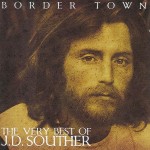
I often tell the story of when I was on the road with The Eagles. I played with JD Souther. Certainly Don Henley was the drummer for The Eagles, but Souther was kind of an honorary Eagle having written a bunch of stuff with them. We rehearsed for that tour, which lasted four months. There were a few days off before that tour began, and I went to work at Hazel’s Bar in Pasadena, which was a real dump, and it paid $40. I was happy to have that job. That was on the weekend, and on Wednesday, Thursday, Friday, and Saturday, it was sold out at The Forum. I was driven there in a limousine. But three days prior, or whatever, I’d been playing in Hazel’s Bar in Pasadena because you never know. When I finished the Eagles tour, I never heard from The Eagles again, and Hazel’s was still there.
So, I guess the point is that was over. I wasn’t worried ever again about am I good enough, will I get the right gig, will the right record deal come. None of that. It was all over.
So The Rhythmic Arts Project was born as a result of the first few weeks in the hospital, before I could even move I asked for some drumsticks and percussion items, and started tapping on the side of my bed. I got the whole ward involved with a bunch of people like myself who were really incapacitated. You know, when they got me up in a wheelchair I had asked all the companies for percussion items, and I got thousands of dollars worth of congas and bongos and shakers, you name it we had it. The hospital said, “Please tell your friends to stop.” There were truckloads of stuff. It filled up the rehab here.
But we were using those things. I didn’t know what I was doing. I was in a wheelchair, my friend Greg came in with his guitar. At first I had a drumset there and I was trying to play with one hand and one foot, and Greg would play along. People would tap. And then the various disciplines in the hospital were coming in, the occupational and speech therapist, the recreational and physical therapist. Everybody found a use for the drums, for focus, attention, memory… Because we had people with dementia and a lot of people with strokes, and cerebral palsy, and folks like myself with traumatic injuries. There was range of motion, there was focus attention.
The element of recreation was also part of it. They called it rhythm therapy in the hospital. I’m not a therapist. Libby Whaley, who had facilitated the program and brought it to senior leadership, really my partner in the program, she and I were doing a national conference with the program, and she said, “You’re going to have to come up with something to call this, because you can’t call it therapy.” We came up with The Rhythmic Arts Project.
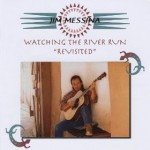
The point of that long story was, thank God for my broken neck. Because had I not broken my neck, I would’ve been a 50-year-old rock and roll drummer still struggling to be on the road. I was playing with Jimmy Messina at the time, and we were making no money working weekends. It was a struggle. Doing sessions in L.A., but nothing to write home about. Jimmy wasn’t exactly thriving. So that was it. I would’ve still been out there now, in my 60’s, playing clubs. A lot of my friends still do, they still tour. So The Rhythmic Arts Project, my broken neck, this whole situation turned my life… The first 50 years were like that, and the next 50 years are going to be like this, and this is great and this is fun.
I figured out how to play again. That took a while. Little by little I regenerated nerves and impulses and created new neuropathways, which enabled me to walk. I’m still paralyzed, I still have quite a few problems, but not anything that they had determined. Their prognosis didn’t work out for them. The broken neck worked out really well for me.
JM: That’s incredible.
ET: I’m very grateful. The people that are in my life and that have been in my life the last 18 years – September 6th it’ll be 18 years – those folks, I never would’ve met them. I never would’ve been in their presence, included in their world. Don’t get me wrong, there’s been some hard times in the past 18 years trying to make the ends meet, and the different people I had to work with that didn’t work out for one reason or another. But as a whole, it’s been a real blessing, every day. Every day. I might’ve looked at it at one time as having gone wrong, but none of that amounts to a pile of beans compared with everything that’s gone right. Touching thousands of people in the world, every day, somewhere. You know, and I get letters and I get videos from everywhere from Thailand to Canada to Australia to Spain. Now it looks like I may go to Malaysia before the year is out. I’m going back to South America in November. We have new programs in Northern California, in Florida, back in New York State. It’s just great.
If it weren’t for musicians, I would’ve never been able to keep it together this long. The local foundations don’t support me because I don’t spend every dime in Santa Barbara. I understand, they have their criteria, their protocol. So my friends, all the players I worked with prior to getting hurt are in my life even stronger. We’re really working together towards the goal. This is a program that’ll probably last forever. I certainly hope it does. Certainly beyond my stay here. And all the guys that come, like Airto [Moreira] – what a glorious human being. And Luis Conte. All the guys in the band. You know, Bill Champlin and I go back, I think, to the ’70’s. His wife was the original lead singer in Pockets. They’re back. Jimmy Calire and I have been working together for probably 30 years, Chris Pinnick and I for 40 [laughs]. I don’t know, I pinch myself.
JM: You’ve told me before that you’ve played with almost everybody. Who stands out? I have to ask – when you look back, who do you think, “Wow, that was really a cool opportunity to play with so-and-so”?
ET: That’s a difficult question for any musician. I’ve had a lot of different bands. I’m probably a better player in Rhythm & Blues than in any other genre. But if you want to make living doing this you have to play everything, jazz, funk, pop, polkas, whatever.
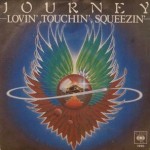
You know, I had a progressive rock band [Pieces] with Steve Perry and Tim Bogert. That was really an eye opener for me. It was an incredible band. Nobody had ever seen or heard Steve Perry before. He used our demos to get the job with Journey. “Lovin’, Touchin’ Squeezin'”, that was Steve’s song, but we had done the arrangement on it and recorded it before anyone. That was quite a band. We could not sell it. Clive Davis himself came to the studio at Sound City, quite a famous studio that I worked at a lot, and he listened to Steve, he listened to “Lovin’, Touchin’ Squeezin'” and he said, “Nah, I don’t hear anything commercial.” [both laugh] Somebody told me he passed on The Beatles…
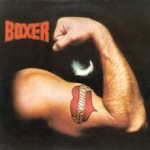
But, you know, it’s difficult when you have your own band, so after that I went on the road with JD Souther on the Hotel California Tour. Bogert went back to England where he was kind of famous because of Jeff Beck and the Beck, Bogert & Appice thing. He joined a band called Boxer, and after I finished the Eagles tour I moved to England and joined that band. That was kind of a hard rock band with Chris Stainton, who was Joe Cocker’s partner and has been working with Clapton for 50 years. He’s an incredible English keyboard player. And Bogert and Michael Patto and Adrian Fisher. So that was fun, but that was an entirely different genre.
My favorite band to play with was probably a band called The Lincolns in Canada. I moved there in 1981 for about four years with Prakash John and Danny Weis and Michael Fonfara. Danny and Michael were from a band called Rhinoceros. Man, when I was a kid, I met them when I was 16 years old – they were 16 or 17, too. Then to get a chance to play with Michael and Danny… Then Danny and I played a lot together over the years. That was really thrilling. That was a really well-known band in Canada.
Like, a lot of bands in Canada, we’ve never heard of them. I worked with the Five Man Electrical Band and a band called the Downchild Blues Band, which was the inspiration for The Blues Brothers. Dan Ackroyd modeled The Blues Brothers after Donnie Downchild [Walsh] and the Downchild Blues Band. In fact, for their 40 year reunion Ackroyd played harmonica with them. So there’s all these backstories. And I worked with Ronnie Hawkins there, and I worked with The Cooper Brothers and Chilliwak and a whole bunch of other Canadian acts. But The Lincolns was a funk band, and for my money it was probably the best band I ever played in. Until now. That was a long time ago. Pockets is my favorite group ever, overall.
But if you look at the stars I played with. I mean, I was Engelbert Humperdinck’s bandleader. I would rather a root canal than to be in that position again, and it paid a lot of money.
Recently I got to play with Kenny Loggins. I had played with Jimmy [Messina] a long time, and recorded with Jimmy, but I’d never played with Kenny. And when I finally did, he was generous and kind and complimentary, and it was really fun. When I was with Rosemary Butler he came and did a Christmas show with us. It was wonderful.
But if you look back at Delaney Bramlett, from Delaney & Bonnie. Delaney was a mentor to The Beatles, to anybody. If you look up Delaney’s history, he’s got his fingers in a lot of pies, from Leon Russell to George Harrison. Eric Clapton was his lead guitar player for a time. Playing with Delaney, to me as a kid, was amazing.
And Bobby Whitlock, and then The Beach Boys. A lot of people played with The Beach Boys, a lot of drummers. I was just one of them for a while. But that always comes up.
Dobie Gray – remember “Give me the beat boys” [“Drift Away”]. I was in that band for a couple of years. Dobie and I were friends. Dobie and Tata Vega were in the original cast of Hair.
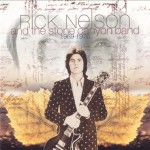
I’ll tell you, one of my favorite gigs was with Del Shannon, back in the day. And then Rick Nelson and the Stone Canyon Band. I did that for maybe a year and a half. Rick was a great guy. The band, one of the best experiences I’ve ever had on the road, and the camaraderie, the family. Rick was a real gentleman. That was funny. I give him a lot more credit than people did as a musician, as a writer, as an icon.
Then Ike Turner, and Dr. John. You know, Dr. John! Oh my God, any drummer would give their right arm to play with Dr. John. Play a second line with one hand. He was a tremendous influence on me. And then Boxer in England after the Eagles tour, and Ronnie Hawkins.
You know, Brenda Russell. My God! She’s still my favorite. If anybody asks me what’s on my iPad, it’s Brenda Russell. And then I did a couple of tours with Marianne Faithfull. I played on Martha Reeves’ records, and John Stewart, Kenny Neal, Tata [Vega], Ronnie Laws, Dwight Yoakam, Johnny Rivers, Freddy Fender, Charlie Rich. And the list goes on.
When you live in Los Angeles… You need to be an adequate player. You have to play well. But the opportunity there to play, in the studio as well as to be on the road, is plentiful. It’s not like Nashville, where they have one set of guys. You know, [drummer] Eddie Bayers, at the time – I think it’s changed now – but at the time Eddie Bayers was on 80% of all country music. Him, [bassist] Michael Rhodes, you know, the same guys. If you wanted to make a record there, you waited for him. When we did Messina’s record in Nashville, Jimmy brought the road band, which I was in, to the studio, and we recorded 26 tunes. He paid us like 25 bucks a tune, I think. He made a deal with River North on Music Row, and they insisted on rerecording “Watching The River Run” with this TV star who was in the TV show Wings, Crystal Bernard, who was a pretty little girl. And they said we have to take your guys off, and we have to put the Nashville bubbas on this track.
I have nothing but respect for Michael Rhodes, and Eddie Bayers is a sweetheart, he’s very humble and boy can he play. He’s just perfect. It’s just that the hierarchy, the people who really don’t know much about anything, are making the decisions there. So here they brought Jimmy in the studio, and they said, “If you want us to release the record you’re going to have to bring these guys in.” And he brought them in on a weekend, which is the only time they could make it, and paid everybody triple scale. So those cats got more money for three hours than the whole band did for three weeks of recording everything. You know, that’s the way it is, I guess. The point is, it’s not easy to make a living being the drummer [laughs]. So thank God for my broken neck. I’m not worried about that anymore.
JM: You mentioned playing with Steve Perry. Any chance that you could get him to come out of retirement and sing at a TRAP benefit?
ET: You know, I hadn’t seen Steve Perry… He wouldn’t mind my saying, he got a case of “the bigs”. After the Pieces band… and we just loved that band, we all did. I took Steve to his first rock concert, in my limousine, to The Forum, to the Eagles show opening night. He had never been in a limo, never been to a rock concert like that. I took him backstage, and I took him out and told him, “Come out here and look at the audience.” So I’d been doing it for years. I said, “Look at that audience”, and he went out. He was like a little kid. He went, “Oh my God.” I said, “Steve, this is you. It’s only a matter of time. It’s you.” I’d never heard anybody like Steve Perry, to this day. The young man they [Journey] have singing with them now is pretty good, he’s like an Elvis impersonator. There’s only one Steve Perry.
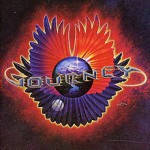
But what happened when he got the job with Journey. He came from Visalia. I think Tim Bogert found him in Visalia. He’d never done much of anything. So being that green, and then going from that to one the biggest bands ever in the world, Journey, he just got caught up in it.
Years later, I was sitting at the Garden Restaurant in Carpinteria, with my friend Arnie. We were having breakfast, and this guy walked up to me and he said, “Are you Eddie Tuduri?” I said, “Yes”. He looked at me at he said, “It’s Steve.” I honestly didn’t recognize him. It’s been 25 years. You know, he looked great, but we’re all a lot older. He said, “Steve Perry”. I said, “Oh my God, Steve!” I hugged him, and he sat down. And he was the old Steve. I didn’t ask him anything. I wouldn’t take advantage of my friendship with anybody. But, yeah, he would be great, wouldn’t he?
But I gotta tell you, those little benefits that we do at the Union Bank building, they’re the best ever. They’re intimate, they’re really fun. The last two years especially, the food, the music, the people. The auctions are stunning. I’m sitting on six guitars here in my office right now. I didn’t have anyone sign anything, the guitars are too beautiful for that. I have one really rare Taylor, and one brand new Taylor I haven’t even taken out of the box. I’ve got an old Guild, and then I have a Yamaha 12-string, a baby Yamaha. They’re not meant to be signed and put on a wall. These guitars are meant to be played, so I think I’m going to just put them out this year. And then we have the artwork and all the other stuff.
And I have six cajons. People love cajons. So when Pearl called me and said, “What do you want this year?”, they were going to send me a drumset, and I said, “You know what, everybody loves cajons.” It doesn’t matter if you can play or not. And the drumset, to be honest, it’s kind of a hassle to bring it in there, set it up, take it down, deliver it.
We’re going to have plenty of musical instruments, lots of artwork, baskets with wine, everybody in town has donated food, from Brophy’s and Chuck’s Steakhouse to Max’s to Whole Foods. Everybody. I’m really excited about this year.
I just hope I can hold my sticks. I haven’t been playing a lot [laughs]. When I do get to play, then I play with the best players in the world, and they don’t all look at each other and go, “Let’s not play so good because Eddie’s not up to it.” So I’ve got to come up to where they put the bar.
JM: Well, you’ve got it in your blood.
ET: Yeah, it comes back. I might have take the week off after. But I’m really looking forward to it. And Pearl made me a beautiful new set of drums. Wait until you see these drums.
JM: I need to wrap it up. Great talking to you. Sometime you’ll have to tell me about being on tour opening for The Eagles, all the crazy stuff that happened there.
ET: Yeah, those are not stories we could write. You should hear the Dwight Yoakam tour stories…

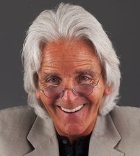
Discussion
No comments for “Interview: Eddie Tuduri”